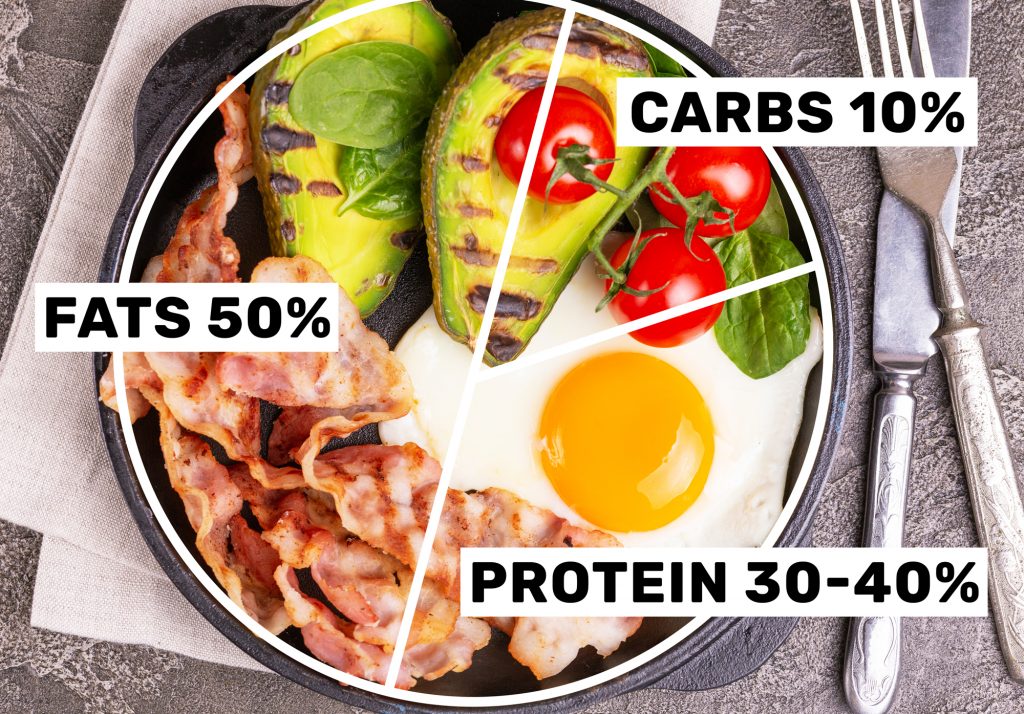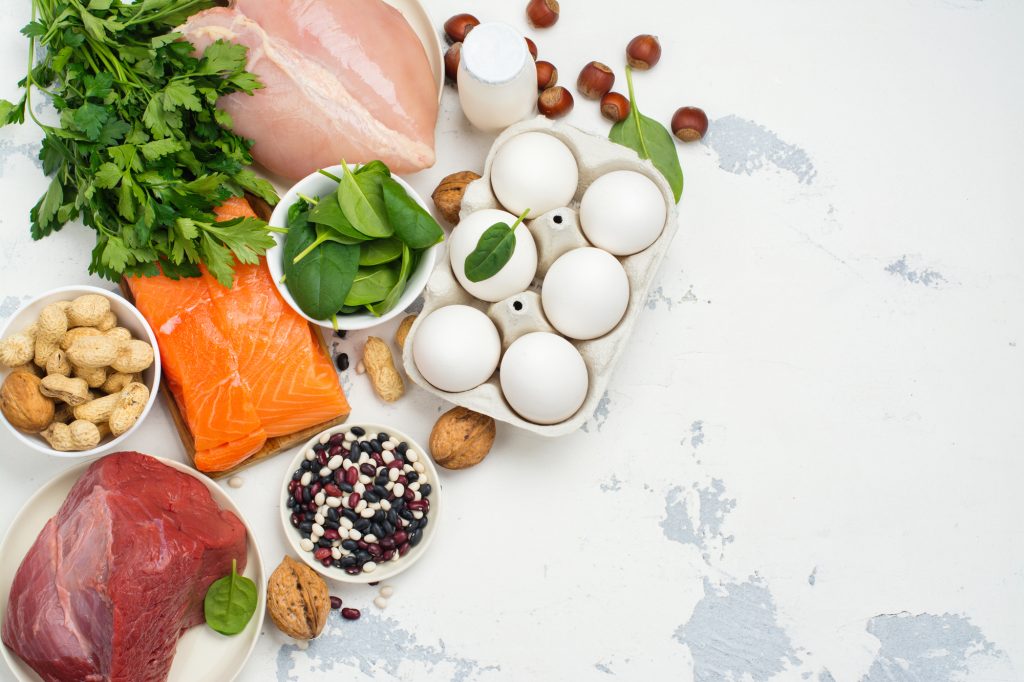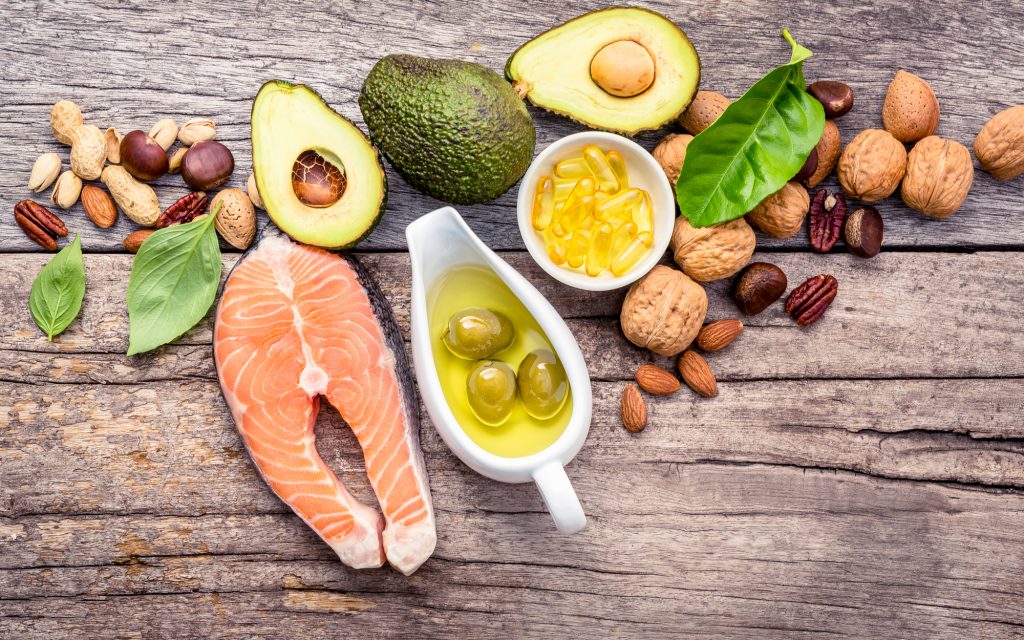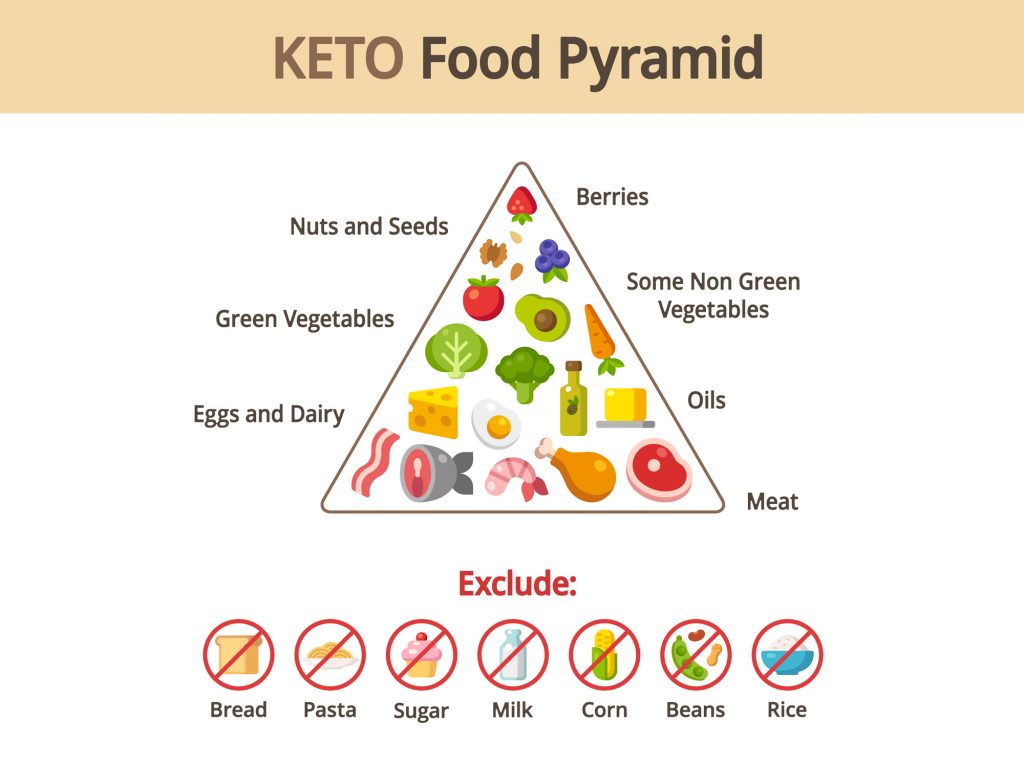Keto Grocery List: The Ultimate Guide for Beginners

Are you new to the ketogenic diet and finding the grocery list to be too much to handle? You’re not alone, so don’t worry!
When it comes to food shopping, the keto diet can be a little challenging, but with the help of this comprehensive guide, you’ll have all the knowledge you need to fill your fridge and pantry with the proper foods.
This guide covers everything from the fundamentals of the ketogenic diet to an extensive list of foods that are allowed on this diet, with a focus on full, healthful meals that can help you enter and stay in ketosis. This guide is ideal for anyone starting out or wishing to update their grocery list. So gather your shopping list, and let’s begin!
The Basic Keto Formula
The standard ketogenic diet consists of 70-80% fats, 20-25% protein, and 5-10% carbs.
It translates into a simple proportion on your plate:
- 30%-40% will be covered in protein.
Choose: eggs, chicken, beef, fish, seafood, pork, cheese, or tofu. - 50% should be covered in healthy fats, such
as: avocado, olives, nuts, or oils. If you use oil as a salad dressing or for cooking, it should be taken into the equation. - 10% will be dedicated to carbs, such as: green leafy vegetables, full-fat dairy, seeds or nuts, and low-carb vegetables.
What does this proportion look like in real life? One of the variations would include eggs with bacon, avocado, and vegetables:

Advertisement
Now that you know the basics, let’s get ready to fill in your grocery basket with keto-friendly foods!
Protein: The Star of Every Dish

Protein is the building block of the body. You use it for repairing tissues, making hormones, and other body chemicals. Foods that are high in protein are very versatile. They can be grilled, fried, roasted, used fresh, frozen, or canned.
Make sure to shop for grass-fed, wild-caught, or organic options, and don’t forget to try out plant-based alternatives.
Stock Up on The Following Protein:
- Red meat (beef, pork, lamb, venison, hare)
- Poultry (chicken, turkey, duck)
- Fish (tuna, salmon, sardines, cod, mackerel)
- Seafood (shrimp, crab, mussels, lobster, prawn, crayfish, langoustine, scampi)
- Tofu and tempeh
- Eggs
- Bone broth
Dietary Fats: The Powerhouse of Keto

When you think of keto, dietary fats will stand directly in the spotlight. They are the primary source of energy for your body. Fats also insulate your organs, regulate body temperature, and support the growth of cells.
While bacon or Buffalo wings technically adhere to the keto rulebook, they are not the best choice. Focus on natural unsaturated sats, use saturated fats in moderation, and avoid trans fats.
Here is Your Fatty List:
- Avocado and avocado oil
- Olives and extra-virgin olive oil
- Coconuts, coconut milk, butter, oil, cream, and MCT oil
- Dairy products (whole-milk yogurt, sour cream, cream, quark, greek yogurt)
- Cheese (halloumi, cheddar, parmesan, ricotta, cottage cheese, mozzarella, brie, camembert, goat cheese, gouda)
- Nuts, nut milk, nut flour, and nut butter (almond, macadamia, Brazil nuts, pistachio, hazelnut, walnuts, pecans)
- Seeds, seed butter, and seed milk (hemp, flax seeds, sunflower, chia seeds, sesame seeds, pumpkin seeds)
- Animal-sourced fats (butter, ghee, tallow, lard)
Carbs: The Source Of Vitamins And Minerals

Carbohydrates typically are the primary source of energy; however, in the keto diet, they play a supporting role. Keto diet allows vegetables and fruits to provide your body with fiber, vitamins, and minerals necessary for your digestion, cognitive function, and overall well being.
*Keep in mind that only 10% of your daily calories can come from carbohydrates. Pick wisely. Quality first!
Your Shopping Cart Will Brighten Up If You Add:
- Low-carb non-starchy vegetables (cauliflower, broccoli, bell peppers, celery, cucumber, eggplant, asparagus, tomatoes, zucchini)
- Green leafy vegetables (spinach, kale, arugula, romaine or leaf lettuce, fennel, cabbage, Brussels sprouts)
- Low-sugar berries (blueberries, strawberries, raspberries, blackberries)
- Mushrooms
- Garlic, green onion, white onion
- Lime and lemon
- Seaweed
Daily Delights: From Spices to Treats

Keto diet can be perked up with a variety of tasty low-carb condiments and spices. You can even enjoy dark chocolate, unsweetened tea, and coffee with your meals. Check out the labels before you eat it and enjoy it!
Add These Products to Your Shopping List:
- Condiments (Soy sauce, oil-based salad dressings, mustard)
- Spices (Garlic powder, salt, pepper, ground ginger, cinnamon, vanilla extract)
- Dark chocolate that contains no less than 70% cacao
- Unsweetened tea
- Unsweetened coffee
The Bottom Line

How can you make the change to keto easier?
- Before you officially start keto, take a cold hard look at your pantry and your fridge and donate products with high carbohydrate content, including processed foods, starchy vegetables, or baked goods.
- Once you get to the store, always check the labels of the food you buy. Many products today have hidden sugars. Try to pick an organic, ecological, and the least processed option whenever possible.
- Your body needs to adapt to the low-carb diet, so take it slow. Your goal is to make keto a sustainable lifestyle that you can follow for years to come, not a quick experiment; you will quit in 3 weeks. Try out different food combinations, find what works best for you, and when in doubt, consult with your physician.







Comments (0)